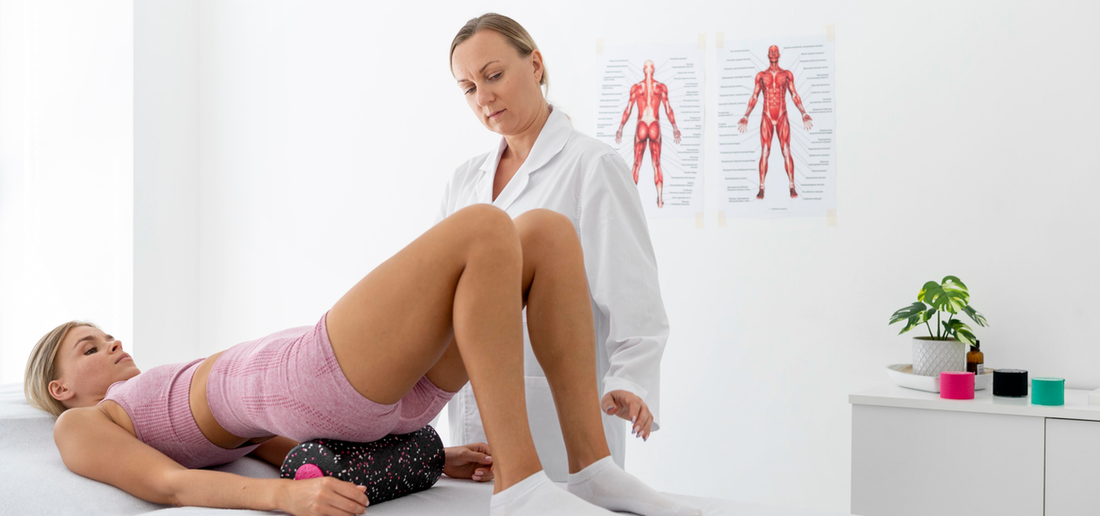Chronic pelvic pain is a persistent pain in the pelvic region that lasts for six months or longer. It can arise from gynecological, urological, gastrointestinal, musculoskeletal, or neurological conditions. Physical therapy offers a non-invasive and effective treatment option that addresses the pelvic floor muscles, posture, and body mechanics to alleviate pain and improve function.
Understanding Chronic Pelvic Pain
Common Causes:
-
Gynecological Issues: Endometriosis, pelvic inflammatory disease (PID), ovarian cysts, uterine fibroids.
-
Urological Conditions: Interstitial cystitis (IC), recurrent urinary tract infections (UTIs), prostatitis.
-
Gastrointestinal Disorders: Irritable bowel syndrome (IBS), inflammatory bowel disease (IBD), chronic constipation.
-
Musculoskeletal Problems: Pelvic floor dysfunction, hernias, muscle tension.
-
Neurological Factors: Nerve entrapment, neuropathic pain.
-
Psychological Aspects: Chronic stress, depression, anxiety.
The Role of Physical Therapy
1. Pelvic Floor Rehabilitation:
Pelvic floor physical therapy involves exercises and techniques to strengthen or relax the pelvic floor muscles. Therapists use biofeedback, manual therapy, and specific exercises to address muscle imbalances, improve coordination, and alleviate pain.
2. Manual Therapy:
Manual therapy techniques, such as myofascial release, trigger point therapy, and soft tissue mobilization, help reduce muscle tension, improve blood flow, and enhance tissue healing. These techniques target areas of tightness and discomfort, promoting relaxation and pain relief.
3. Postural Training:
Poor posture can contribute to pelvic pain by creating imbalances and increasing strain on the pelvic floor muscles. Physical therapists work with patients to improve posture, alignment, and body mechanics, reducing pain and preventing further injury.
4. Stretching and Strengthening Exercises:
Specific exercises tailored to the patient's needs can strengthen weak muscles, improve flexibility, and enhance overall stability. Stretching exercises help relieve tension, while strengthening exercises build support for the pelvic region.
5. Education and Self-Management:
Physical therapists educate patients about their condition, treatment options, and self-management techniques. Patients learn how to perform exercises correctly, manage symptoms, and make lifestyle changes that support their recovery.
6. Breathing Techniques:
Proper breathing techniques can help relax the pelvic floor muscles and reduce pain. Diaphragmatic breathing and other relaxation techniques are incorporated into therapy to promote overall well-being.
Benefits of Physical Therapy for CPP
1. Pain Relief:
Physical therapy effectively reduces pain by addressing the underlying musculoskeletal issues contributing to CPP. Techniques such as manual therapy, stretching, and strengthening exercises target pain sources and promote healing.
2. Improved Pelvic Floor Function:
Pelvic floor rehabilitation enhances muscle coordination, strength, and flexibility, leading to better pelvic floor function. This can alleviate symptoms such as urinary incontinence, bowel dysfunction, and sexual pain.
3. Enhanced Mobility and Flexibility:
Physical therapy improves overall mobility and flexibility, making daily activities more manageable. Patients experience increased range of motion and reduced stiffness.
4. Better Posture and Alignment:
Postural training and body mechanics education help patients achieve better alignment, reducing strain on the pelvic floor and other muscle groups. Improved posture can prevent further pain and injury.
5. Increased Quality of Life:
By managing pain and improving function, physical therapy enhances the overall quality of life for individuals with CPP. Patients often report better sleep, increased physical activity, and improved emotional well-being.
Patient Outcomes and Success Stories
Case Study 1:
A 35-year-old woman with endometriosis and CPP underwent pelvic floor physical therapy. After three months of tailored exercises, manual therapy, and education, she reported a significant reduction in pain, improved bladder function, and increased ability to participate in daily activities.
Case Study 2:
A 40-year-old man with chronic prostatitis and pelvic pain experienced relief through a combination of myofascial release, stretching, and strengthening exercises. His physical therapist also educated him on proper posture and body mechanics, leading to long-term improvement in symptoms and quality of life.
Integrating Physical Therapy with Other Treatments
Collaborative Care:
Physical therapy is most effective when integrated with other treatments, such as medication, lifestyle changes, and psychological support. Collaborative care involving gynecologists, urologists, gastroenterologists, and mental health professionals ensures a comprehensive approach to CPP management.
Regular Follow-Up:
Consistent follow-up with physical therapists helps monitor progress, adjust treatment plans, and maintain long-term benefits. Patients are encouraged to continue self-management techniques and exercises at home.
Physical therapy is a vital component in treating chronic pelvic pain, offering a non-invasive and effective approach to managing symptoms and improving quality of life. By addressing musculoskeletal issues, enhancing pelvic floor function, and promoting overall well-being, physical therapy provides comprehensive relief for individuals with CPP. With personalized treatment plans and collaborative care, patients can achieve sustainable improvements and a better quality of life.




